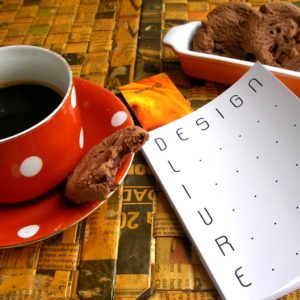Free Software communities have developed very efficient methods and tools to share programming code, however, their user interfaces are often difficult to use for people that are aside from this process. Nobody seems to know how to include Interaction Design in Free Software projects, since their development dynamics are very different.

Interaction Design on proprietary software is based on face-to-face user research and presential meetings. This does not work in Free Software, when development is geographically distributed and asynchronous. For this and many other distinctions, these communities have remained distant.
Faber-Ludens Institute is a nonprofit that aims to integrate Design and Technology in Brazil. Inspired by the success of Free Software, since its inception, the Institute has been trying to develop a new concept for Interaction Design, called Free Design.
Free Design is not only using open source tools on design projects. The proposal goes further: the main goal is to open up software and hardware development process for all types of user. The Institute believes that this is as much as important as to open the source code, which is the result of this process.
Opening the process means that there are possibilities of participation at many levels. One person can work at code level, but another that has no knowledge how to do it, can participate in the development of interaction flow, interface layouts, and features defition. Using web applications and open files, one can enable collaboration in ways that go beyond programming code.
The most important contribution of Free Design is the emphasis on documenting, sharing and opening up the design process. Not just collaboration, but also meta-collaboration, ie. to decide together how to work collaboratively. Discussions on which tools to use, what steps to do, and labor division are all open to the participation and shall be documented for future references.
The research projects led by Faber-Ludens Institute uses the Drupal open-source platform for its internal organization. The collaboration is open to anyone interested through the Institute website. There are currently 150+ open projects there (mainly in portuguese). During and after the project development, team discussions are all available for consultation and their content are licensed by Creative Commons. This means that a website visitor can continue the project in another context, copying or reproducing the development process itself.
Free Design in this sense is also an Open Innovation strategy. Since one of the Institute’s goal is to disseminate knowledge, the availability of this feature is essential to support learning for anyone who seek to understand Interaction Design.
Recently, Faber-Ludens had launched Corais.org (portuguese only), a platform for Free Design projects. Following the experience from it’s website, Faber-Ludens wanted that anybody from any orgnizations could run Free Design projects online. Corais (portuguese word for coral reef) nurture projects by offering a set of online collaboration tools for each project: blog, mindmap, to-do list, and others.
One important feature from Corais is the link between project pages and methods page, where design techniques are described.





[…] big claim from the Free Design movement is to liberate design from the designer. Design must be know and practiced by everyone, even for […]